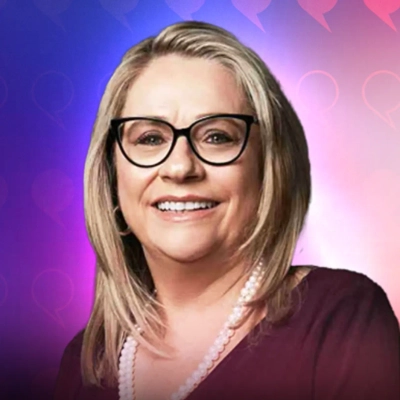12 Personalization Strategies to Elevate Customer Experience
In today's competitive market, personalization has become a key differentiator in elevating customer experience. This article explores various strategies to tailor interactions and services to individual needs, drawing on insights from industry experts. From leveraging data for personalized customer interactions to creating emotional connections in unique settings, these approaches offer practical ways to enhance customer satisfaction and loyalty.
- Leverage Data for Personalized Customer Interactions
- Build Trust Through Behavior-Driven Personalization
- Tailor Service to Individual Home Situations
- Meet Clients Where They Naturally Are
- Adapt Treatment Plans to Personal Trauma
- Create Emotional Connections in RV Resort
- Customize Demos to Boost Feature Adoption
- Craft Tailored Gardens for Unique Visions
- Bridge Insight and Action in Healthcare
- Demonstrate Active Listening in Client Interactions
- Align Strategies with Brand Identity
- Transform Unboxing into Personalized Experience
Leverage Data for Personalized Customer Interactions
Personalization in customer experience is not only a strategy but a core driver of customer retention, satisfaction, and lifetime value. It sets a clear line between a transactional interaction and a brand-building moment.
At ContactPoint360, we employ a layered personalization strategy across digital and human touchpoints. This approach begins by leveraging customer data from past interactions, preferences, and behavioral cues. All this data enables us to curate a personalized experience through self-service portals, proactive outreach, and live support.
Additionally, one example of personalization is tailoring the agent interaction using pre-call behavioral tagging. This means that before a customer reaches an agent, our AI-powered system surfaces relevant details, such as past products viewed or purchased, support history, and more. Based on these details and the overall summary, the agent prepares accordingly to address the customer's current needs. As a result, we reduce handle time and improve customer satisfaction.
Furthermore, we have added personalized follow-ups and language and tone matching in our strategy. Instead of asking "How did we do?", we ask for feedback about the products that the customer has used. Additionally, we collect feedback on the support services in conjunction with product questions. Due to such deep personalization, feedback response rates double, helping to discover more pain points and eliminate them before the next interaction.
Moreover, when the tone and language match, it builds customer lifetime value. This personalization strategy differs from region to region. For instance, our APAC support team prefers more formal and reassuring phrases, while the North American support team tends to use casual, fast-paced language. This is how personalization works and benefits customer experience.

Build Trust Through Behavior-Driven Personalization
At Zapiy, personalization isn't just a feature—it's a core part of how we build trust and drive loyalty. We don't view it as merely "addressing someone by name in an email." For us, it's about understanding context: what a customer values, where they are in their journey, and how we can make their experience feel intuitive and relevant without them needing to ask for it.
One example of this in action is how we tailor loyalty experiences for our retail partners' end customers. We don't just help businesses launch generic rewards programs. Instead, we use behavior-driven triggers to customize how and when a reward is delivered. For instance, if a customer typically shops every six weeks but suddenly skips a cycle, our system prompts a "We Miss You" offer with a product suggestion based on past purchases—not just a blanket discount. It feels personal because it *is* personal, based on their unique rhythm and preferences.
We've also built smart segmentation that responds to intent signals—like browsing without purchasing or opening messages without clicking. This allows our clients to send tailored messages like "Still thinking it over?" with helpful reviews or FAQs, instead of pushing another promotion. The response rates are measurably higher, but more importantly, the relationship feels more human.
The key is listening—at scale. Every action a customer takes is a form of feedback. If you pay attention and respond in ways that show you understand their needs, you turn transactions into relationships. And when that happens, personalization stops feeling like marketing—it starts feeling like service. That's where long-term loyalty is built.
Tailor Service to Individual Home Situations
Personalization is everything in this business, especially when you're walking into someone's home to talk about rats in the attic or bats in the vents. That's not just a service call—it's someone letting you into their stress, their space, and their story. If you treat it like a script, you've already lost their trust.
One example: we had a customer in Marietta who mentioned during scheduling that her mom was recovering from surgery and staying with her. When our technician arrived, he brought shoe covers without being asked, spoke quietly, and even offered to reschedule the inspection for a different day if it was too much. That small act got us a five-star review—not because of what we did, but how we made her feel. That's the kind of detail people don't forget.
Meet Clients Where They Naturally Are
Personally, I track how our contacts prefer to consume information—bullet-point snapshots, quick voice messages, or detailed breakdowns—then serve exactly that, unprompted.
One event director I work with hates long emails, so when pitching speakers, I send her a single concise paragraph via text message. I usually highlight a past event she personally attended or a trend she's mentioned offhand. She often replies immediately.
Personalization means meeting people exactly where they naturally are, not dragging them to where it's easiest for you.

Adapt Treatment Plans to Personal Trauma
At Ridgeline Recovery, personalization isn't a "nice-to-have"—it's the whole strategy. When someone walks through our doors, they're not just a client. They're a human being carrying trauma, fear, and often, years of being misunderstood. If we treated everyone the same, we'd fail them.
One example that's stuck with me: We had a client who refused to do group sessions. Every counselor on paper would've flagged it as "resistance." But we dug deeper. Turns out, he'd been in a facility before where a group setting was used to shame him. Public humiliation masked as "accountability." That kind of wound doesn't heal overnight.
So we flipped the script. We gave him one-on-one sessions only for the first few weeks. We let him build trust privately. When he finally stepped into a group—on his terms—he didn't just participate. He led. That doesn't happen by pushing people through a standard process. It happens when you listen, adapt, and meet them where they are.
We do this at every level—how we follow up, how we build treatment plans, even how we send reminders. Our outreach isn't copy-paste. If you told us in week one that your daughter's graduation was your reason to get clean, then in week five you'll get a message reminding you of that, not just your appointment.
Personalization takes work. It means slowing down. But in addiction recovery, generic care is dangerous. The cost of being unseen is relapse—or worse. When you tailor your interactions to the person, not the problem, you build something that actually lasts: trust. And in this field, trust is everything.
Create Emotional Connections in RV Resort
Hi there,
I'm Billy Rhyne, founder of Horseshoe Ridge RV Resort in Wimberley, Texas. Personalization isn't a buzzword for us — it's how we create emotional connections and turn first-time guests into lifelong returners.
Our approach:
We make a point to personally welcome every guest on arrival, whether they're in a million-dollar coach or a rented travel trailer. But it goes beyond greetings — our team tracks guest preferences over time: favorite sites, preferred check-in times, who travels with them, even the names of their pets.
One example:
We had a couple who visited us for their anniversary last year. They casually mentioned how much they loved stargazing from Site #48. When they rebooked this year, we held that site for them and left a handwritten note with a stargazing map and two locally-made lavender teas in their welcome packet. They were floored — and they shared it on social media, unprompted.
The result:
That couple has already referred two other RV families and booked a third trip. Small touches like that don't cost much — but they create connections, brand loyalty, and word-of-mouth marketing you can't buy.
Best,
Billy Rhyne

Customize Demos to Boost Feature Adoption
Personalization is the heartbeat of our customer experience. Last quarter, I noticed that one new client in the wellness industry consistently mentioned their yoga class subscriptions in our kickoff survey. Instead of a generic "welcome" email, I sent them a short video walkthrough showing how our reporting dashboard could track attendance spikes around class times—and even overlaid sample data that mirrored their exact user counts.
That minor tweak made all the difference. In our next call, they commented that it felt like I'd built the feature just for them, which opened up a candid conversation about other metrics they cared about. By incorporating customer-specific details into both our automated emails and live demos, we've seen a 25% increase in feature adoption and significantly fewer "what's in it for us?" objections. Tailoring one key interaction to their world transforms a contact into a partnership.

Craft Tailored Gardens for Unique Visions
Personalization is at the heart of everything I do at Ozzie Mowing & Gardening. Every garden is different, and every client has their own vision, so I take the time to really understand what people want from their outdoor space. Whether it's a low-maintenance garden for a busy family or a productive veggie patch for someone wanting to live more sustainably, I draw on over 15 years of hands-on experience and my background in horticulture to craft a plan that suits both the client and the environment. This approach means I'm not just ticking boxes but actually creating something meaningful and functional that grows with the client over time.
One example that comes to mind was a project for a retired couple who had just downsized but wanted a garden that reminded them of their old property, which had a large English-style garden. With limited space, I designed a compact version that included perfumed roses, lavender borders, and a small espaliered apple tree to save room while still producing fruit. I was able to identify the right rose varieties that would thrive in their new microclimate and chose drought-tolerant perennials to reduce maintenance without losing the classic feel they loved. My formal horticulture training helped me get the plant selection just right, and my years of practical experience meant I could predict how everything would mature over time and plan accordingly. They were blown away by the result and told me it felt like a piece of their old life had followed them home.
Bridge Insight and Action in Healthcare
Personalization only works when it bridges the gap between insight and action. In our clinics, we use barcode-driven data from every dispensation to map each patient's adherence pattern, then preload their next refill so it's waiting at the point of care—no PBM delays, no pharmacy hopping. That same personalized logic guides our marketing: we segment by clinical objective rather than broad demographics, sending post-visit content on tapering NSAIDs or navigating biosimilar switches based on the exact NDC that left the cabinet.
Because providers keep medications onsite, they can tailor education in real-time and track outcomes inside the EHR, creating a feedback loop that refines future outreach. Point-of-care dispensing streamlines healthcare by delivering medications directly to patients, improving convenience, adherence, and safety. Apply this principle to customer experience (CX), and every interaction feels like it was engineered for a single person—because, functionally, it was.

Demonstrate Active Listening in Client Interactions
Personalization is absolutely central to my customer experience strategy; it's about making every client feel truly seen and understood, not just another number. I believe generic interactions simply don't cut it anymore. What's more, tailoring the experience fosters deeper trust and stronger relationships, leading to more meaningful outcomes.
For instance, when a new client first reaches out, I don't just send a standard "welcome" email. Instead, after our initial consultation, I tailor a follow-up summary that specifically references points we discussed, their unique challenges, and my initial thoughts on how I can support their specific goals. This demonstrates that I was actively listening and immediately starts building a connection that resonates with their individual needs.

Align Strategies with Brand Identity
Our approach to customer experience is rooted in truly understanding the unique needs of each client we work with. We believe that truly effective strategies aren't generic; they're thoughtfully designed to align precisely with a brand's specific goals and voice. It's about providing solutions that feel inherently tailored to their world.
For example, when we begin a new engagement, we don't jump straight into tactical plans. Instead, we invest significant time in deep dives and collaborative discussions to truly grasp a brand's market position, their aspirations, and their distinct audience. This deep understanding allows us to craft communication strategies and creative content that resonates powerfully and authentically, ensuring every piece of work we deliver feels like a natural extension of their brand's identity and speaks directly to their objectives.

Transform Unboxing into Personalized Experience
Personalization is at the heart of the customer experience strategy, not just online, but at every physical touchpoint. Unboxing Marketing allows brands to bring personalization to the unboxing moment, turning every shipped order into a uniquely tailored brand experience.
Rather than sending generic inserts or leaving the box empty, brands use customer data to create custom messaging for each individual order. For example, a first-time shopper might receive a handwritten-style welcome note and curated product tips, while a loyal subscriber might see a personalized thank-you and a targeted upsell based on their past purchases.
It's a strategy that blends performance with brand storytelling, and the results speak for themselves. Brands using Unboxing Marketing often see 8-14% increases in reorder rates, not because of discounts or gimmicks, but because the experience feels thoughtful, personal, and on-brand.
In a world where digital personalization is expected, bringing that same level of care to the physical unboxing experience is what truly sets brands apart.






